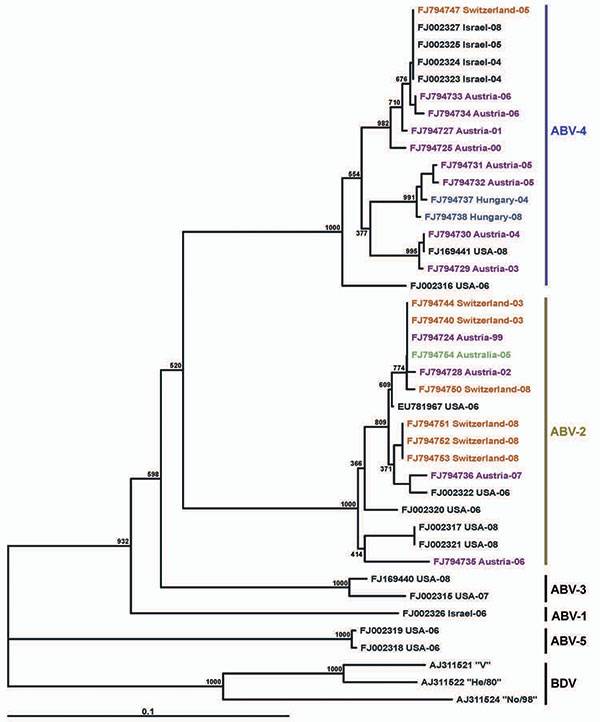Volume 15, Number 9—September 2009
Research
Avian Bornaviruses in Psittacine Birds from Europe and Australia with Proventricular Dilatation Disease
Figure 3

Figure 3. Phylogram illustrating the genetic relationship among avian bornavirus (ABV) genotypes, based on a partial nucleoprotein gene region. Three representatives of Borna disease virus (BDV) were used as outgroups. Scale bar indicates genetic distance; the bootstrap support values are shown for the main nodes. ABVs are identified by GenBank accession number/country of origin/year of collection. Further details are shown in the Appendix Table. Nucleotide sequences determined in this study are highlighted in different colors according to their country of origin. The main ABV genogroups are indicated.
Page created: December 07, 2010
Page updated: December 07, 2010
Page reviewed: December 07, 2010
The conclusions, findings, and opinions expressed by authors contributing to this journal do not necessarily reflect the official position of the U.S. Department of Health and Human Services, the Public Health Service, the Centers for Disease Control and Prevention, or the authors' affiliated institutions. Use of trade names is for identification only and does not imply endorsement by any of the groups named above.